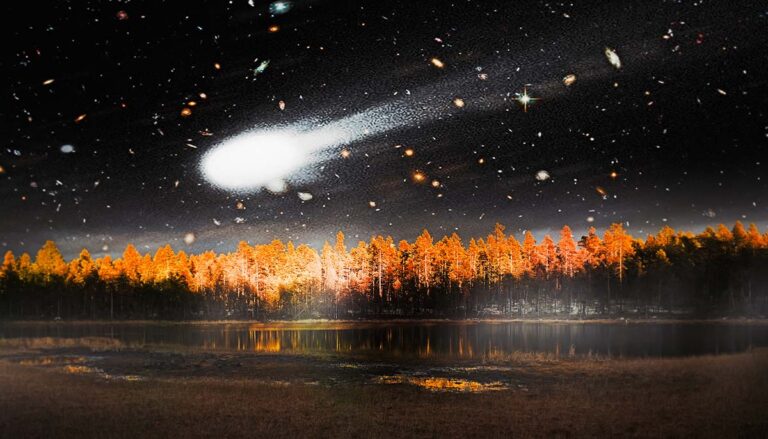At least two minerals that have never occurred naturally on Earth have been discovered in a 2.5-ounce slice from a 15.2 metric ton (33,510 pounds) meteorite that crashed in Somalia. Scientists are still investigating this otherworldly find.
Enormous meteorite discovered in Somalia
The El Ali meteorite was found in the town of El Ali, Somalia. It was first officially discovered by prospectors from a Somalia-based mining company between 2019 and 2020, Fox reported.
However, some locals in Somalia had known about the meteorite for at least five to seven generations, making it hundreds of years old, said Professor Chris Herd from the Department of Earth and Atmospheric Sciences at the University of Alberta, who is also the curator of the University of Alberta’s Meteorite Collection. Somali camel herders knew the meteorite as a place where they could sharpen their knives.
The meteorite weighs 15.2 metric tons (33,510 pounds). It’s about 6.6 feet long, 3.3 feet wide, and 4.3 feet tall. It is the ninth-largest meteorite ever discovered, according to a news release from the University of Alberta.
Two never-before-seen minerals in meteorite identified by scientists
While exploring a 70-gram (nearly 2.5-ounce) slice taken from the meteorite, scientists discovered two new minerals that have never been seen before on Earth.
The discovery of the two minerals was announced in a press release from the University of Alberta.
In collaboration with researchers at UCLA and the California Institute of Technology, Professor Herd classified the meteorite and the minerals. He classified the El Ali meteorite as an ‘Iron, IAB complex’ meteorite, one of over 350 in that particular category.
But as Herd was working on the classification, he saw something that caught his attention. He brought in another expert, Andrew Locock, head of the U of A’s Electron Microprobe Laboratory, who said: “You’ve got at least two new minerals in there.”
Both new minerals are phosphates of iron. A phosphate is a salt or ester of phosphoric acid.
The 2 new minerals named
Herd named the first mineral “elaliite” after the name of the “El Ali” meteorite itself. He named the second mineral “elkinstantonite” after Lindy Elkins-Tanton, vice president of Arizona State University’s Interplanetary Initiative, CNN reported.
Elkins-Tanton is a Regents Professor at ASU’s School of Earth and Space Exploration, as well as the principal investigator of NASA’s upcoming Psyche mission, which will be a journey to a metal-rich asteroid orbiting the sun between Mars and Jupiter, according to NASA.
A third possible mineral found
A committee is currently reviewing what may be a possible third mineral found in the sample.
“Whenever you find a new mineral, it means that the actual geological conditions, the chemistry of the rock, was different than what’s been found before,” Herd said. “That’s what makes this exciting,” he added. “In this particular meteorite, you have two officially described minerals that are new to science.”
Future of meteorite uncertain, may be sold to China
The future of the meteorite remains uncertain. It has been moved to China in search of a potential buyer. It now remains to be seen whether additional samples will be available for scientific purposes.
“Whenever there’s a new material that’s known, material scientists are interested too because of the potential uses in a wide range of things in society,” Herd said.





